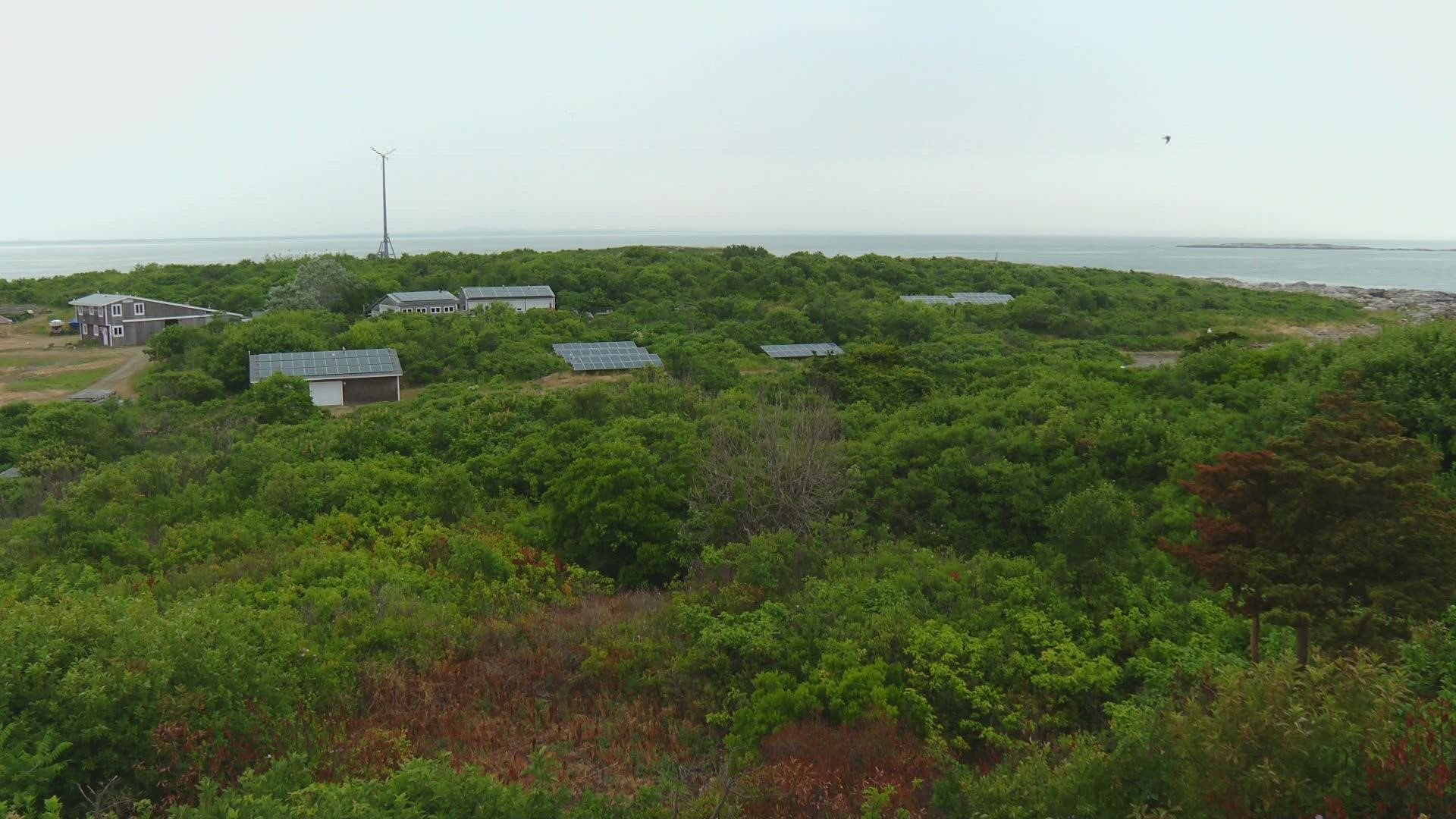KITTERY, Maine — In 2002, the Shoals Marine Laboratory installed a wind turbine, the first step in what has become a rigorous and ongoing drive to make Appledore Island self-sustaining.
Jennifer Seavey, executive director of the lab, said the island is a great place for this type of effort because it’s small (roughly a half mile by a half mile) and isolated (seven miles off the coast of Kittery). About 65 people live there in the summer, all of them connected to the lab. The island is not open to the public, and nobody is there in the winter.
“Everything about how we operate out here we have looked at the sustainability of,” Seavey said. “What we eat, what we do with waste, how we deal with water, how we use water, how we make water.”
Since that wind turbine was activated, the lab has installed numerous solar panels and, more recently, batteries to store power for when the sun doesn’t shine, or the wind doesn’t blow. The transformation has been impressive. Two decades ago, diesel generators provided all the island’s power. Since then, the use of diesel has been cut by ninety percent.
The cost of installing green energy systems has been substantial, but the lab—which is operated jointly by the University of New Hampshire and Cornell University—has done it gradually, with an eye on both its bank account and the island’s ecology.
“I would say over time we’re getting that money back, not only in savings in fuel,” facilities director Ross Hansen said. “But we’re a marine lab, and we’re doing the right thing for the environment.”
Every summer, college students hired as interns spend time here, working on real-world energy and engineering challenges, including water conservation.
“It’s really nice because it’s on such a small scale, so it’s pretty easy to understand,” intern Jason Shao said. “I mean, we can see the wind turbine, we can see the solar, we have numbers on everything.”
The numbers are crucial, and they’re monitored not only by the interns but also by Unitil, the energy company that sponsors the internship program.
The engineering solutions that work on this compact slab of rock will, according to Unitil, often work in far larger markets. One of the projects on Appledore right now is making three energy microgrids work together—a challenge utilities might wrestle with on the mainland.
“What being out here does is, because it is smaller, it becomes easier to see how it all relates and how it all ties back,” Alec O’Meara of Unitil said. “So even though it’s a larger scale on the mainland, it’s exactly the same type of problems.”
Part of what the laboratory wants to do is create an example, to show other places how advances in sustainability can be workable and cost-effective.
“We did it in a way a lot of people are going to do it,” Jennifer Seavey said. “So it’s a great model to replicate in other places.”
Correction: One can’t just show up at Appledore Island and wander around, but there are various programs offered by the Shoals Marine Laboratory that are open to the public. One must sign up for them in advance.
Also, there are a few private homes on the back side of the island.

